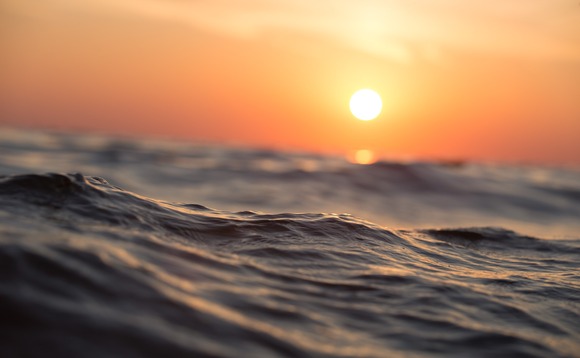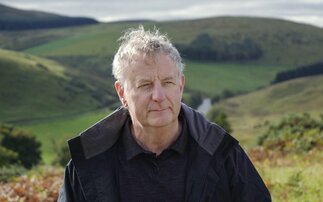Image: Pexels
Government confirms three new Highly Protected Marine Areas, but shelves plans for two further pilot sites sparking protests from green groups
Just weeks after reiterating its commitment to protecting 30 per cent of land and seas for nature through last year's Kunming-Montreal Global Biodiversity Framework, the UK government today controversially curtailed plans to introduce five new Highly Protected Marine Areas in UK waters.
Defra today announced it is to officially designate three new Highly Protected Marine Areas (HPMA) by July this year, banning all harmful activities in the areas, including fishing, construction, and dredging, in a bid to create zones that will help marine ecosystems and fish stocks recover.
However, the confirmation means two of the five HPMA pilot sites originally proposed by the government will not be granted official status, while two will be smaller than initially planned.
The three sites being taken forward are found in Allonby Bay in the Irish Sea, the Dolphin Head zone in the Eastern Channel, and North East of Farnes Deep in the Northern North Sea.
But in a written ministerial statement, Environment Secretary Therese Coffey confirmed the government would not designate the pilot zone in Lindisfarne as an HPMA, owing to the impact on the local community raised during the consultation, nor the Inner Silver Pit South zone, owing to the high costs to fishers identified during the impact analysis.
Moreover, the boundary of the Allonby Bay HPMA has been changed to allow for an area of recreational angling and take account of the needs of Maryport Harbour and the Port of Silloth, while the boundary for the Dolphin Head zone has also been revised.
Coffey said the new HPMAs marked a step forward for the government's Environment Improvement Plan, which aims to halt biodiversity loss by the end of the decade. "Highly Protected Marine Areas are a vital step forward in enabling our ecosystems to thrive, increasing climate resilience and ensuring we have a healthy and productive marine environment for generations to come," she said.
The government said the new HPMAs would also complement the existing network of Marine Protected Areas, which cover 40 per cent of English waters.
"This is a crucial next step to aid marine ecosystem recovery in our waters and I'm delighted to see my recommendations become a reality today," said Marine Minister Lord Benyon. "Not only will the first of these Highly Protected Marine Areas protect important species and habitats, but they will propel the UK forward in our mission to protect at least 30 per cent of the global ocean by 2030."
The new zones are expected to help bolster the UK's natural carbon sinks, as well as enhance biodiversity protection. For example, both the Allonby Bay and North East of Farnes Deep zones are thought to contain high levels of 'blue carbon' habitats that capture and store carbon, while all the new zones act as nursery grounds for a range of commercial species of fish.
The government also insisted that while two of the original pilot zones will not become HPMAs, additional sites will now be explored with future potential protected sites put out for consultation.
However, conservation groups today expressed disappointment at the failure to protect a larger area, noting that the three selected sites cover less than 0.5 per cent of England's seas. In contrast, the Scottish government has set a target to designate 10 per cent of its seas as HPMAs by 2026.
"Losing two out of five HPMA pilot sites is a major set-back and does not bode well for Government meeting its targets to effectively protect 30 per cent of land and sea by 2030 and to ban bottom-trawling across marine protected areas by 2024," said Dr Richard Benwell, CEO of Wildlife and Countryside Link. "With only a few square miles of our seas currently protected from all damaging activities, the proposed Highly Protected Marine Area programme is an important new ‘gold standard' of environmental protection. However, there are now only three pilot sites set for designation, when the government's initial review concluded that five sites would be the bare minimum for this important scheme."
He added that while it was "crucial that HPMAs work for wildlife and local people", Ministers must now ensure that "this vital programme now advances in a way which brings communities on side while offering much-needed protection for our struggling ocean and endangered wildlife".
His comments were echoed by Dr Jean-Luc Solandt, principal specialist for Marine Protected Areas at the Marine Conservation Society, who warned that if fish stocks are to recover larger areas need to be set aside as no take zones.
"Our marine habitats must be given the opportunity to recover and provide the maximum benefits to us - including biodiversity restoration, carbon storage and supporting fisheries recovery," he said. "The UK government cannot continue to under achieve and must show much greater ambition and initiative to build a network of HPMAs - or No Take Zones - covering at least 10 per cent of English seas by 2030 to allow our seas to thrive."
Meanwhile, Dr Lissa Batey, head of marine conservation at The Wildlife Trusts, argued the decision to introduce only three HPMAs was a "nonsensical" move that does "nothing like enough" to reverse the decline in marine habitats.
"Three is better than none, and it is still amazing that we will be making history in designating highly protected sites for the first time," she said. "But it's nothing like enough… Nature is in big trouble and plummeting at a rate never seen before in history. Decade after decade we have continued to see declines in our wildlife - with one in seven species in the UK now under threat from extinction. We have lost 20 per cent of coastal habitat in England since 1954, more than 90 per cent of our native oysters reefs in England since the mid 1800s, and up to 92 per cent of seagrass from UK seas. The common skate is common no-more. Populations of angel shark have declined by 99 per cent, basking sharks by 95 per cent since the 1800s too - these are all trends we need to halt, urgently.
"This is why designating highly protected sites are so crucially important. They provide nature with a lifeline - a chance to recover. Our shallow seas, diverse seabeds and deep underwater canyons can be healthy, productive and full of life once more. The government came up with a longlist of over 30 important places that deserve the highest protection and whittled it down to five precious places. Now we discover that only three have made the cut and the long term health of our seas has been sacrificed to the short term interests of the fishing industry - even though the industry has the most to gain from the spillover benefits of HPMAs of increased crab, lobster and other commercial species."











